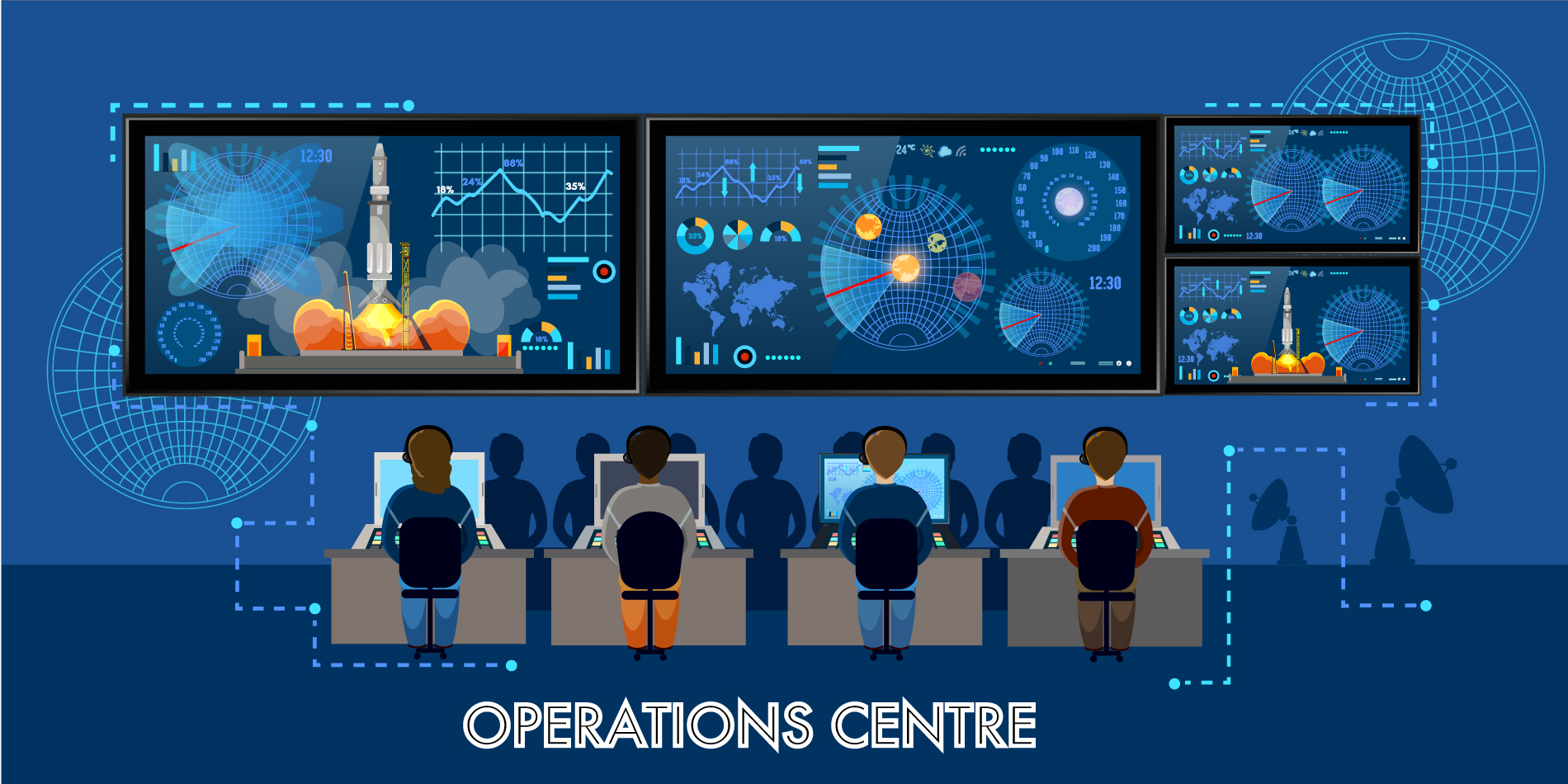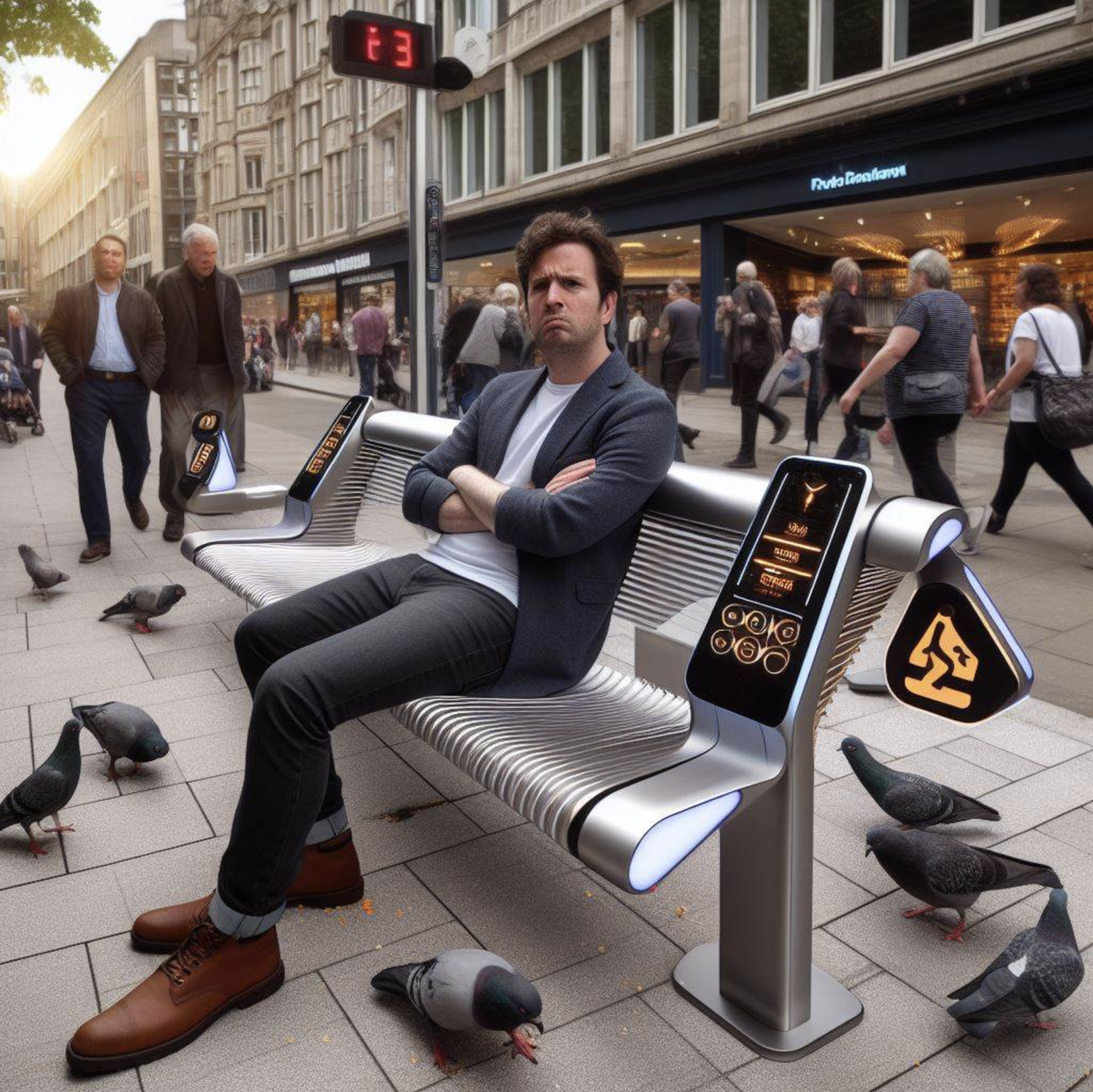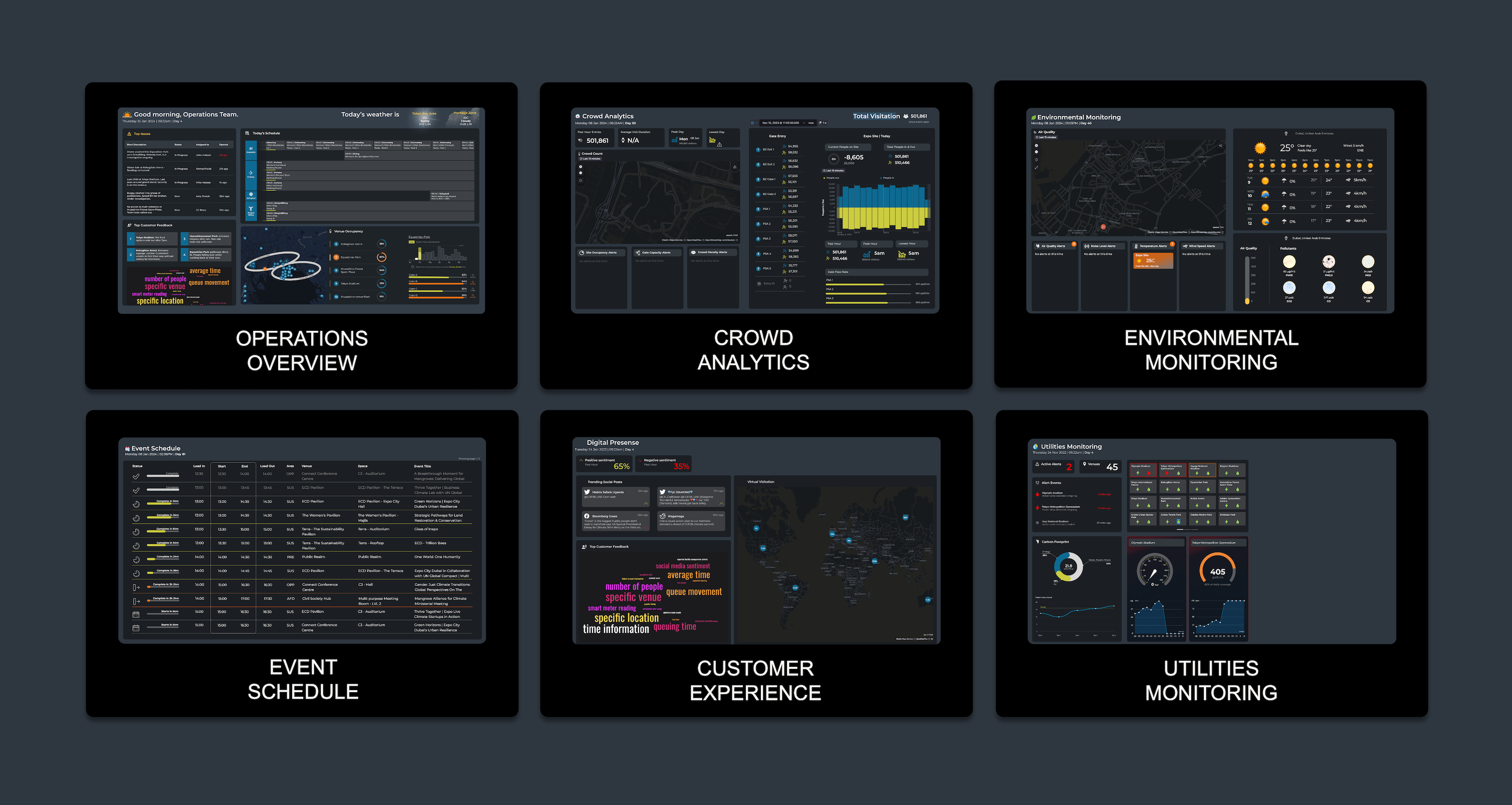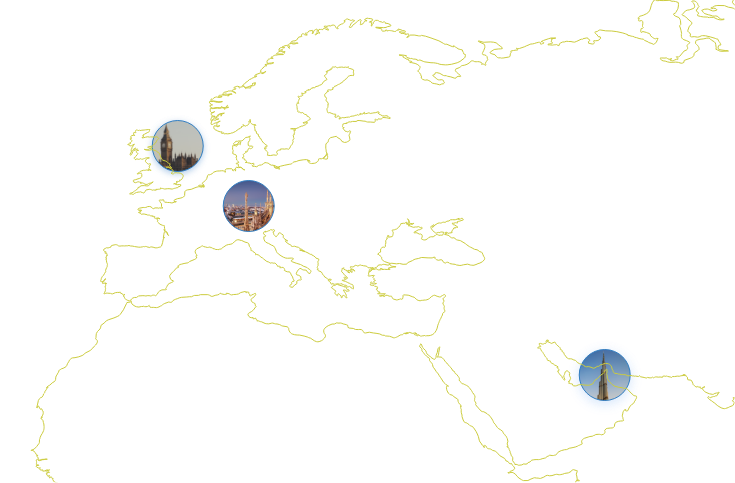A high-performance operations centre is like a superpower. It allows organisations to break down internal silos, get closer to customers, and accelerate action. It brings people, process, and technology together in an environment of extreme visibility, where issues can be quickly surfaced and resolved. Where coordination, analysis, decision-making, and forecasting can take place across teams to deliver seamless end-to-end operations.
The challenge of visibility and coordination
As organisations get larger and more complex it becomes difficult to really get a feel for what is happening on the ground on a daily basis. Even if the digital plumbing has been put in place to achieve near real-time business analytics across functions, the bigger challenge is one of coordinating, at speed, across different teams and levels of authority to resolve issues and drive improvement actions. The operations centre model has long been used for mission-critical functions such as network management, cyber security, emergency response, airport operations, transport operations, space operations, major events, police, and the military. It provides the best way to achieve situational awareness and speed of response. For organisations that want to excel at customer experience and seamless operations, an enterprise operations centre can deliver the same performance levels.

The Operations Centre as a unifying platform
Providing real-time measurement of product and service performance, including monitoring service level performance and KPIs via real-time data feeds
Identifying service degradation and impacts
Creating an up-to-date, shared view of ongoing activities and operational status across stakeholders in different formats such as real-time activity feeds, run sheets, or reporting
Monitoring and coordinating issue resolution across diverse teams
Taking direct responsibility for the resolution of critical issues or requests. This may include developing workarounds until a permanent fix can be put in place
Communicating the impact of ongoing actions to resolve issues to key stakeholders
Driving Root Cause Analysis (RCA) and issue trend analysis to prevent the same or similar incidents from happening again
Providing support to delivery teams where needed (e.g., resources, decisions, process guidance, priorities)
Providing cross-functional coordination for activities that span multiple teams
Communicating relevant information and receiving feedback to drive improvement
Helping delivery teams assess the business impact of issues and changes to services
Identifying insights and analysing trends based on data & analytics to guide actions
Performing modelling and simulation of potential scenarios
Preparing upcoming operational plans and requirements
Applying service & operational improvements daily, weekly and monthly
1. Operational Visibility
2. Issue management
3. Support and Coordination
4. Forecasting, planning & continuous improvement
Capability Model
The design of a high-performance enterprise operations centre should build a target operating model that includes the following capabilities:
Services
The design of a high-performance enterprise operations centre should build a target operating model that includes the following capabilities:
Who uses them?
Who supports them?
How critical are they?
Where are they delivered?
Who is overall responsible for them?
Service Levels
A set of customer-aligned service targets and service indicators monitored by the operations centre.
Speed of response and resolution of issues
Target uptime / downtime
Throughput / traffic / volumes supported
Coverage hours required per service (24/7, 8/5, etc)
Delivery or response time to requests for service
Customer satisfaction, Net promoter score (NPS)
Organisation
The end-to-end operations organisation in measuring and delivering services.
Operations centre team
Other linked ops centres, contact centres, service desks
Support, delivery and operations teams for all services
Internal and external entities
Executive-level stakeholders
Processes
The processes and procedures that govern operations. Common definitions and language are important components of this to avoid ambiguity and accelerate understanding and decision making.
Issue management
Change management
Escalation management
Contingency plans
Problem management (including RCA & issue trend analysis)
Business Continuity & disaster recovery planning
Standard Operating Procedures (SOPs)
Enabling Systems
The tools that provide visibility, support workflows and collaboration and automate activities. Simple, effective and easy-to-use tools are preferred as they ensure active use across all teams.
Monitoring operations activities, services and KPIs in real-time. Effective real-time monitoring should provide an early warning of abnormal conditions and support troubleshooting activities.
Issue management
Communications & collaboration
Analytics and Business Intelligence
Workforce management
Training
Operational readiness exercises
Physical or virtual?
The operating model may involve multiple teams across different locations and functions. So, getting everyone in the same room is not practical.
However, there is real value in having a dedicated physical space where a core team can operate as the focal point for the coordination of distributed teams.
It is also possible to join up multiple operations centres as part of a distributed model, particularly when dealing with multiple locations. In this case, the hierarchy and interfaces of these ops centres need to be clearly defined.
A virtual operations centre might be a good option for fully remote teams or smaller organisations that don’t want to build a physical ops space but would like to achieve a certain level of awareness and coordination.
Thinking room design
Getting key operational functions working together in close proximity is already a silo-busting achievement. However, when using an operations centre for long periods there are some important design considerations to consider.
Room dimensions
The space must be fit for purpose, whether it is newly built or an existing location. It should accommodate the planned seating capacity and expansion for longer-term use. High ceilings are needed for full visibility of video walls. Long narrow spaces should be avoided to allow for better horizontal visibility across the room and video walls.
Seating layout
The seating layout is dependent on room dimensions. Options include front facing, circular, v-formation, work pods and combinations of these. There are trade-offs to be made on team co-location, video wall visibility and space utilisation. Team collaboration should be a driving principle in the design, clustering similar functional teams as much as possible. The design may change over time based on lessons learned and evolving operational needs.
Personal workspaces
A standard desk is 1.2m x 0.75m. Anything smaller than that will make for an uncomfortable working environment. Consideration should also be made to provide separation between workspaces, especially for long-term operations. This is where people will spend a lot of time, so they need to be comfortable and have some individual working space to concentrate. High-quality chairs and adjustable tables also improve ergonomics.
Workspace equipment
Some ops centre roles may require multiple displays or a high-quality ultrawide, but likely not all. Will people bring their laptops, or will there be dedicated workstations for each position? Quality headsets enable people to focus, without external distractions.
Passageways
Sufficient space is needed behind individual working spaces. For example, in low traffic areas around 0.6m is needed behind a personal workspace and for high traffic areas, around 0.9m.
Video wall
The purpose of a video wall is to provide real-time, shared operational visibility to those in the room. While people can see everything they need on a laptop or mobile, the video wall is helpful when anyone (and everyone) can see a change in operational status out of the corner of their eye (e.g. green to red service status, it started raining, excessive crowding, etc). The video wall(s) need to match the room design and there are multiple options including LED, flat screen TV and high-res projection each with pros and cons. Some important considerations include viewing distance, viewing angles, minimum height (above eye obstruction line), total wall height and the breakup into sections horizontally based on functional needs.
Access control
Controlled access is typically required to limit who can access and log entry and exit.
External visibility
The operations centre may be visible (via a glass wall or viewing area) to those on the outside, or if dealing with highly confidential information it may be closed off. <br/> Adjustable blinds or smart glass is a good way to have the best of both.<br/>In reality, whether we like it or not, most operations centres have a showcase role at times.
Lighting
Adjustable lighting that can control lights individually and by group provides better flexibility for different times of the day and purposes. Consider personal lamps for each desk as overall lighting levels in the room may be lowered at times.
Audio/Sound
Noise levels should not exceed 55 dB(A) to enable the team to maintain focus. A normal conversation is approximately 60 dB (A). Consider the use of flexible tools to improve acoustics such as quality wireless headsets and workspace dividers. A microphone and speaker system are needed in large spaces for briefings and updates.
Cabling
A raised floor with redundant cabling for each working space to save time in case of cable failure. Plan the power and data sockets on a desk surface with proper cable management, with quick access to the wiring.
HVAC
Cooling capacity needs to consider the heat from the video wall (if using LED / flat screen TV). Air quality (including CO2 level) and air temperature play an important role in keeping people alert. For optimal comfort, room temperature would range from 22 to 24 degrees Celsius, with relative humidity from 40 to 65 %. The CO2 level recommended: is 500 – 1000 ppm and an environmental sensor should be installed to measure the above.
Power
Reliable power source provided. UPS & backup power should be provided.
Security
Fire alarm to be installed & CCTV as needed.
Telecommunications
Ideally use two independent providers with geographically diverse entrances to the building and cable paths to critical network equipment.
Alternate (Backup) ops centre
What is the alternative location to be used for the team in case of disaster (flood, fire) in the main operations space?
Supporting rooms
Supporting the operations centre may be additional rooms used for major incident/crisis management, side-meetings, executive briefings and possibly satellite operations capabilities. These should be considered based on needs.
Implementation approach
In general, the goal is to achieve a level of cross-functional integration as quickly as possible. Once certain functions, processes and tools are operational it can be further iterated in phased releases that both expand capability and apply learnings of what works and what doesn’t.
For example, a phased approach starting with phase 0, could deliver the first iteration in 3 – 6 months. This may involve a subset of services, functions, system functionalities or processes, but it will allow people to operationalise early and drive forward to the next phase.
Implementing an operations centre takes discipline because it’s not a typical business-as-usual capability. It is designed as always-on. It operates cross-functionally. It’s the place where critical issues land for support, coordination, and decision.
A change in mindset
The only way to really learn about operations is to do operations. Theoretically, all of the benefits that an operational model and operations centre bring should be achievable without putting everyone in the same room. But the operations centre is where the organisation gaps are bridged. Gaps in communication between different teams and functions. Gaps in process knowledge and completeness. Gaps in decision-making and assigning additional resources when needed. Gaps in technology and tooling doing what is expected of them, and most of all gaps in accountability. That accountability is achieved via a role-based organisation, where multiple people take turns fulfilling the same role.
Measuring success
There are several ways to measure the success of an operations centre and wherever possible these should be customer-driven, cross-functional KPIs. Examples include:
- Better able to measure and meet service levels
- Higher customer satisfaction
- Improved business velocity (decisions, changes, improvements, requests handled, issue response & resolution, etc)
- Improved forecasting of resources
- Improved resilience: better handling of critical external and internal issues with better communication of what is happening and what is being done about it.
Do we really need one?
Operations centres are an effective solution for mission-critical or high-performance environments where speed is vital. The same outcomes can likely be achieved with a business-as-usual organisation structure, processes, and systems: it will just take longer. Longer for customer experience issues to surface, longer to analyse and resolve issues and longer to coordinate different teams to act. So, from this perspective, a well-implemented operations centre is a superpower that accelerates performance.
If you would like to know more about high-performance operations, contact us.
Latest News
 6 Mar 2024Putting People First in Urban Digital Design
6 Mar 2024Putting People First in Urban Digital Design 5 Feb 2024Real-time Situational Awareness
5 Feb 2024Real-time Situational Awareness


